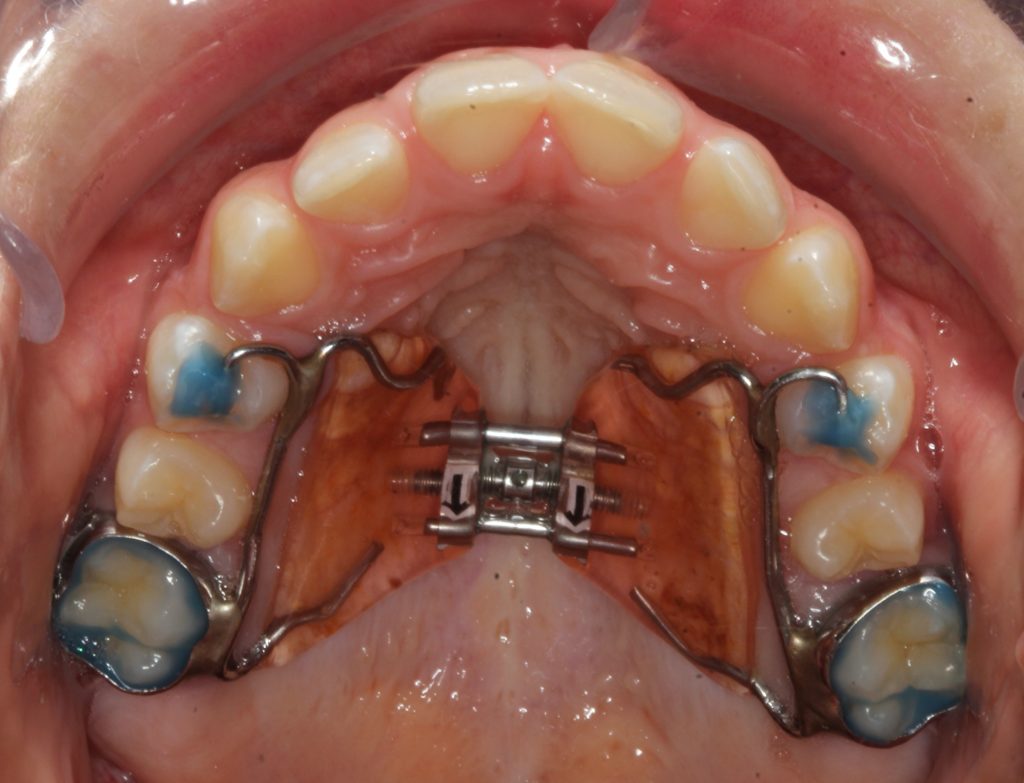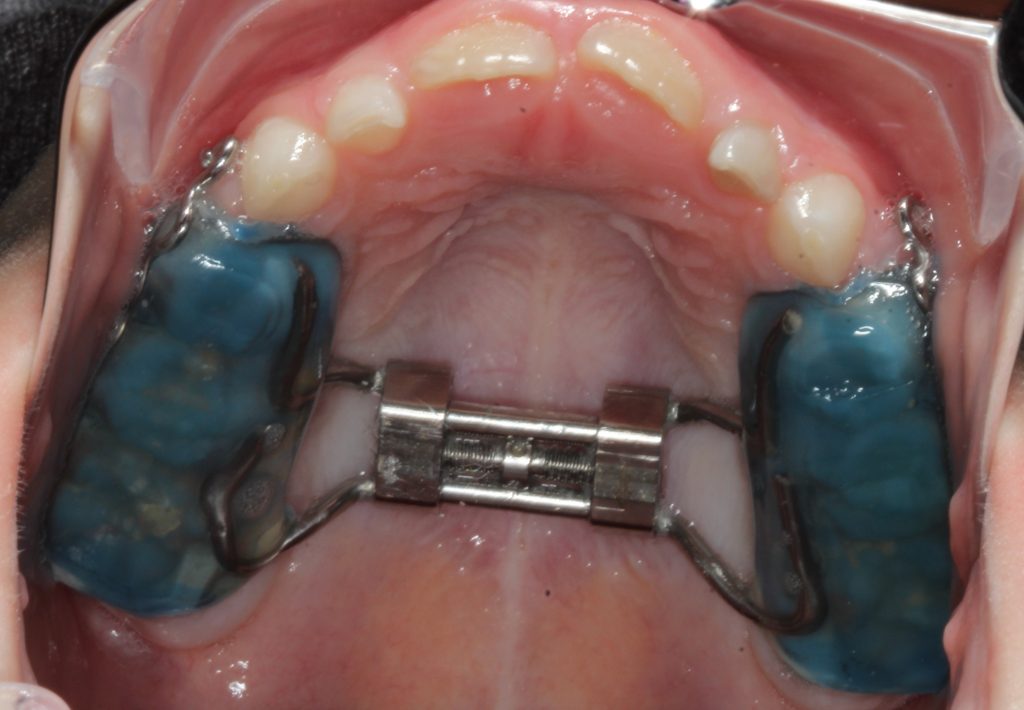Palatal Expanders: Why, How, and When
Palatal expanders are a very commonly prescribed orthodontic appliance. We have developed this blog article to help educate our patients as to why, how, and when we use them.
Why Consider A Palatal Expander
Palatal expanders are recommended when the upper jaw (also called the maxilla) is too narrow relative to the lower jaw. For functional reasons, the upper jaw is supposed to fit outside the lower jaw. When one’s upper jaw is too narrow, their lower jaw does not fit inside it and it subsequently tends to shift to one side (either right or left) in order to achieve a more comfortable bite – commonly referred to as a functional crossbite. This creates a temporary facial asymmetry that can be fixed if the upper jaw is made the correct size through palatal expansion. After expansion, the lower jaw swings back to a more central position. If the functional crossbite is not corrected early, the lower jaw grows into the asymmetric position and cannot be fixed later.
Further, normalizing the upper jaw through palatal expansion can have a positive effect on opening up the nasal and pharyngeal airway passages, as well as allowing for increased tongue space and room for the erupting dentition. A bigger upper jaw means more room for the teeth growing underneath the gum tissue in the bone. Before we talk about how we expand the upper jaw, let’s discuss some biology and terminology!
Biology and Terminology
Skeletal expansion
Skeletal expansion refers to a situation where a tooth is in a wider/more outward position because the bones have been displaced. To be more specific, the midpalatal suture has opened, the two upper jaw bones have moved further apart from one another, and because of that, the teeth have been moved to wider positions because they are housed inside the bones. The teeth themselves did not move more outwards inside the bones.
Dental expansion
Dental expansion refers to teeth moving inside the bones with the bones not moving. This is permissible to a certain extent but there is a limit to how much a tooth can move before it is in an unhealthy position outside of the bone. This results in gum recession and periodontal issues.
How Do Palatal Expanders Work
When a palatal expander is prescribed by an orthodontist, it is intended to separate the two upper jaw bones in situations where the upper jaw is too narrow. It usually consists of a component glued to the upper teeth (usually orthodontic bands) and a jackscrew. With the repeated turning of the jackscrew, force is transmitted to the teeth and to the suture, thereby theoretically getting both dental and skeletal expansion. However, recall that at age 14-15 the suture is usually fused so any attempted expansion that is done beyond this age usually results in just dental expansion (with some exceptions – more on this later). When the palatal expansion is done between the ages of 7 to 14, there is usually some component of dental expansion and some component of palatal expansion. With increasing age during this 7-year window, the percentage of skeletal expansion decreases whereas the percentage of dental expansion increases.
How often the jackscrew is turned is determined by the orthodontist based on a number of factors – such as the type of expander, age of patient, expansion goals, etc. The most common protocol is one turn a day up to a certain maximum number of turns. Each time the expander is turned, the jackscrew is opened one-quarter of a millimeter.
When Is It Time For A Palatal Expander
While palatal expansion can be done before the age of 7, it needs to be done very slowly. Rapid palatal expansion which is done before the age of 7 can possibly lead to some adverse nasal issues. Palatal expanders before the age of 7 are often done with a removable expander that also doubles as a retainer. Because the expander is removable (as opposed to glued in), it exerts less force and not worn full time. It is also usually turned once or twice a week as opposed to on a daily schedule.
As mentioned above, a palatal expander is traditionally used between the ages of 7-14. In these situations, a “traditional” expander is glued to the teeth to create both dental and skeletal expansion. The most common styles are:
- Hyrax – completely metal design with bands around the molar teeth.
- Haas – similar to a Hyrax expander but there are acrylic pads bonded to the metal framework that pushes on the palatal vault.
- Bonded Acrylic – instead of molar bands, an acrylic framework is fabricated around the chewing (occlusal) surfaces of all the posterior teeth and connected to the jackscrew.
There are pros and cons of each design but they all work in a similar manner.
What happens after the age of 14? Sometimes a traditional expander is attempted with the hope that enough force can be generated to open the calcified suture. However, this is usually not advisable since the vast majority of the expansion will be dental expansion with the associated periodontal risks. Therefore, in the past, if someone required palatal expansion after the age of 14, jaw surgery was recommended to take place around age 20 (once growth was complete).
With advancements in technology, orthodontists have started utilizing Temporary Anchorage Devices (TADs) to assist with palatal expansion. By inserting TADs in between teeth and retrofitting an acrylic expander that is only touching the hard palate and TADs (i.e. no teeth), enough force is generated that the suture can more often than not be opened in patients between the ages of 15-20. The other benefit is that since nothing is glued to the teeth, this type of expansion is entirely skeletal in nature and not dental – leading to healthier gum tissues. More advancements are also being made to do TAD anchored expanders in even older patients without the need for surgery.
Next Steps
To discuss your options for palatal expanders, please contact our office. We also have a whole page dedicated to Early Intervention.
Please note that during COVID-19, to practice social distancing measures, Walt Orthodontics is booking virtual dental assessments.







